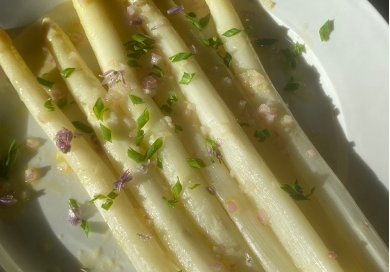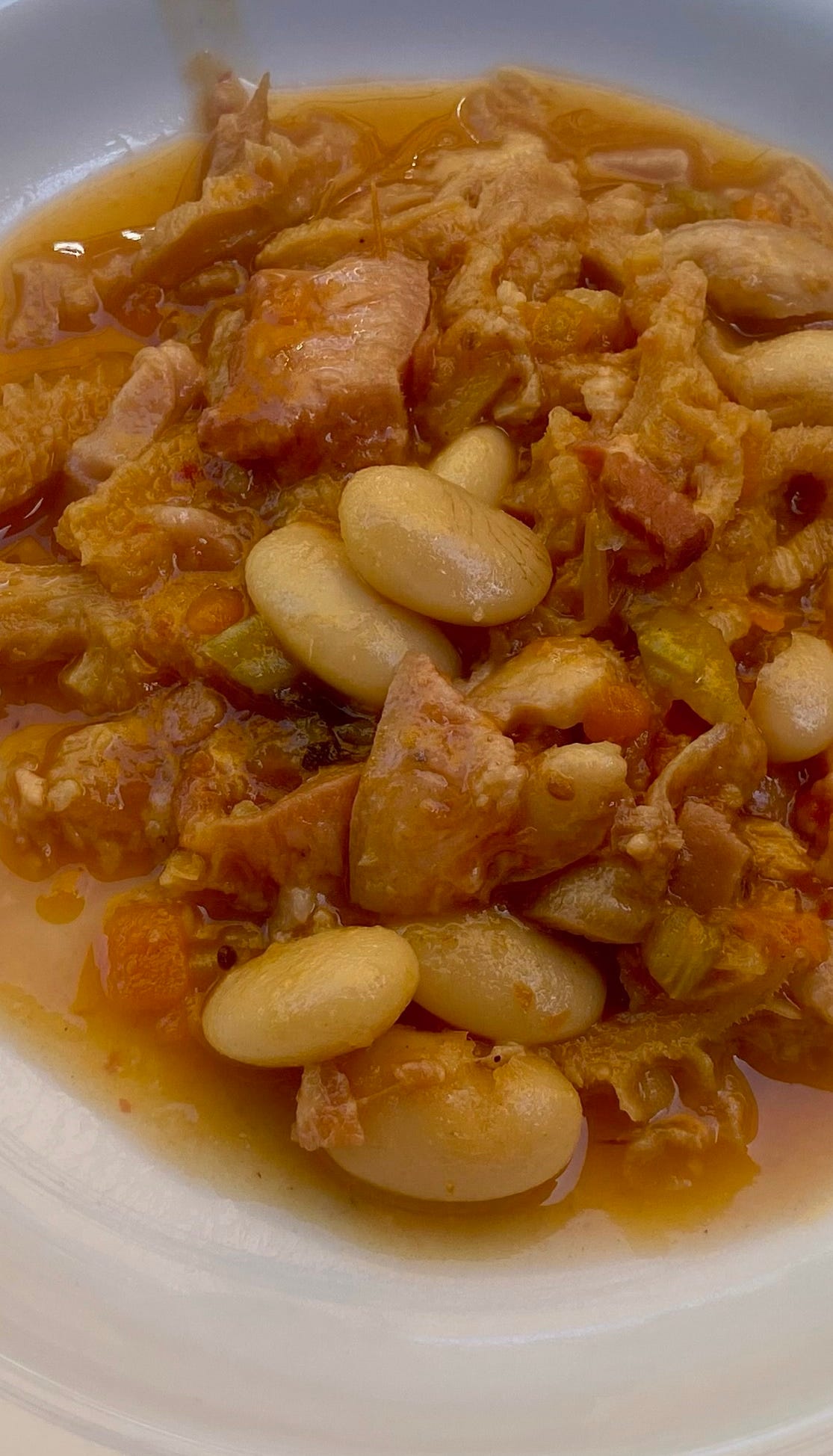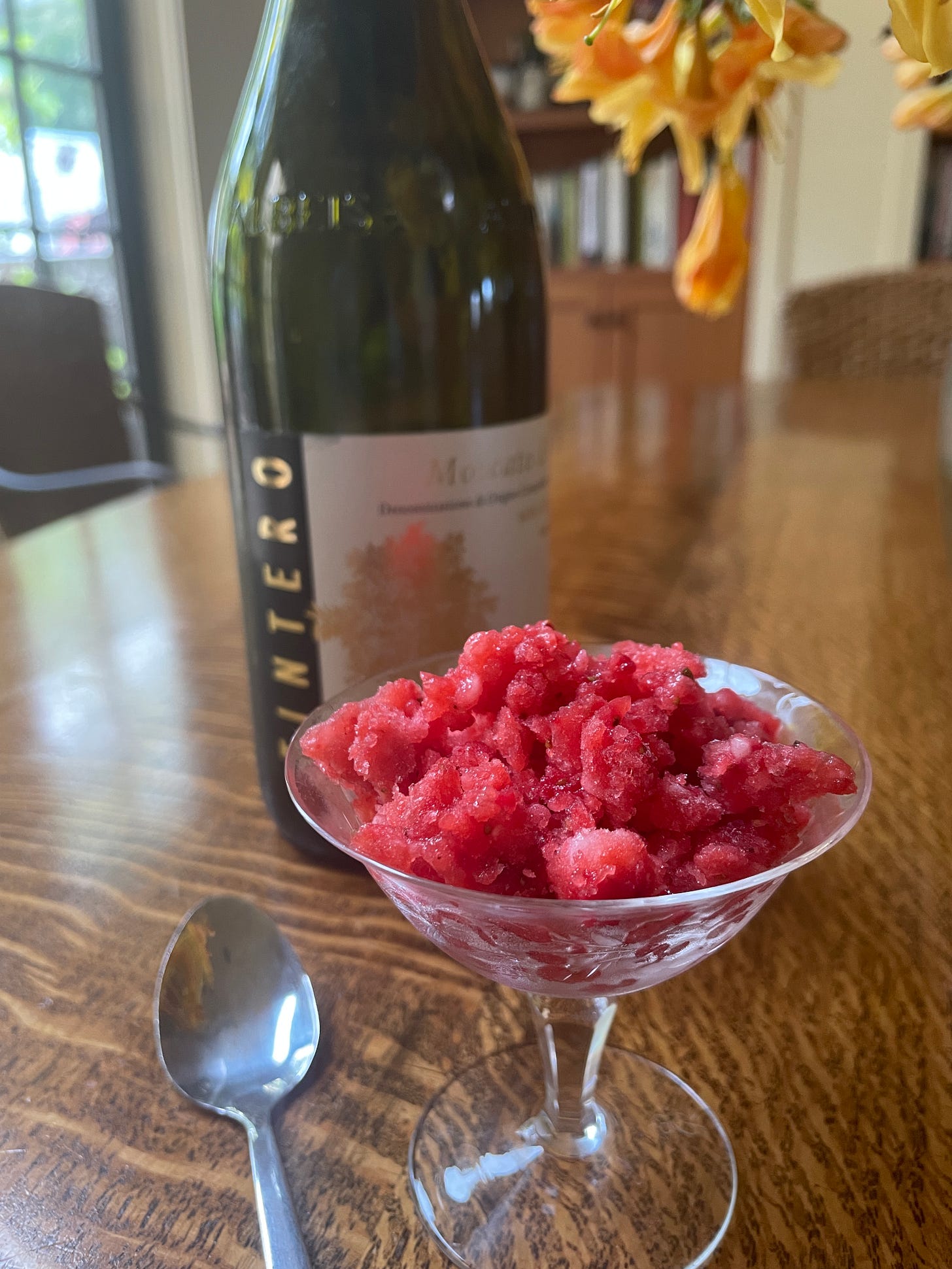KERMIT LYNCH WINE MERCHANT
A Local Treasure
I thought to share a preview of a piece I have written for the upcoming June issue of the Kermit Lynch Wine Merchant monthly Newsletter. If you are unfamiliar with Kermit Lynch Wine Merchant, check him out Here. He and his corps have continued their métier since 1972. Kermit Lynch's core conviction as a wine importer is to seek out and promote authentic, terroir-driven wines that reflect the unique characteristics of their place of origin. He is known for his focus on traditional winemaking practices and sustainable agriculture. Kermit, his well-traveled son Anthony, and his veteran corps are also passionate about introducing wine lovers to lesser-known, high-quality wines from small, family-owned wineries and delivering the finest imports of French and Italian wines. His wine has personality, and his choices express his own. His one-of-a-kind cellar for all to access is in Berkeley, CA, but the wines are also shipped far and wide. View the website or call the store to confirm our delivery location.
"Remembrance of things past is not necessarily the remembrance of things as they were."
(Attributed to Proust)
I’ve chewed on this sentiment and concluded in the case of two old friends, Richard Olney, and Kermit Lynch, that things are very much “as they were”. Richard (RIP) has been in the grave for 25 years, and Kermit lives most of the year 6000 miles away. Yet, as one who thinks a great deal about food and wine, I continue to be altered by their influence. Without Richard, I might not have followed a career in food or pursued it with as much passion. Without Kermit, I might still be loving Welch’s. As such, I was delighted to receive Kermit’s invitation to imagine what I might cook and offer by way of wines from his common cellar if he and Richard came to lunch.
In this strange and wonderful world of alternative connections, I would never have thought lunch could go virtual! But their ethos lives and I have no problem conversing with spirits. But first, a few words on the concept of a menu, one I’m sure we three share: A menu is not food with wine or wine with food. It is both together, like a family or two lovers, that belong, each separate, distinct, amenable, or not, fused or frozen, harmonious or dissonant. You get the point. No matter what happens when you put the two together, 1 becomes 1, or 1 and 1 is less than 1, or 1+1 =10. I have never found the math predictable. Food and wine are endlessly dynamic. Richard said: “The wine one drinks from one’s glass depends on a vast number of things that make it precisely what it is at the moment.” (See his French Menu Cookbook, 2nd edition, 2002, Ten Speed Press, page 28.) It’s no conceit to say there is a strong element of mystery at play in wine itself. The juice of the grape can conjure scents that, however congruous, are essentially foreign. How does “raspberry, leather, garrigue, cat piss, or kerosene” find its way into a bottle of wine? Whether actual or imagined, the scents attributed seem to be drawn from thin air. Food, no less evocative, is grounded in the earth and expresses the scent of itself. Yet wine surely animates food, and food directs its purpose. I cannot otherwise explain the rare synergies or the altered dimensions of taste that occur when the two are joined. My simple criterion is reciprocity. Is the food enhanced by the wine and vice versa? Suffice it to say, there is fascination in the nuance.
A few words about pairing wine and food: Avoid the advice of wine experts. Be aware that sommeliers can be dangerous. I recently relied upon the advice of one who highly recommended a Rosso di Montalcino to go with a deeply savory dish. Not knowing the wine other than the grape and its Tuscan provenance, it seemed like a reasonable choice. I thought it might provide the cleansing tannic wash the dish needed. You couldn’t open the wine with channel locks! It entirely thwarted my oxtail ravioli. Fascinating.
At the risk of affront regarding the KLWM forthcoming newsletter, listen to Kermit and the KLWM support team or read Richard. I am also lucky to have your ear. But I loathe to recommend this or that wine for the following reasons. There are, of course, references as to where you might start, but do rely on your own hunches. Food and wine together is surely a language all its own, not in words, but in the realm of the senses. Some poet said, ‘when words fail, music speaks’. That gets at it. Otherwise, as has been said before, there are no rules. Don’t be gamed by wine speak. It is most often silly in its prescription and reach for metaphor. One can spend a lot of time puzzling out how a wine “dances on the palate”, or opens in a “bouquet of flowers, or elevates to an “Elixir of the gods”. Ever dance on water? Which flowers? Are we talkin’ Jesus, Allah, the Buddha?? Is wine really fun, or are you having fun while you are drinking it?? On the other hand, I can take cat piss and kerosene out of quotes. The same volatile chemical compounds found in certain animals' urine (like cats!) famously find a home in Sauvignon Blanc and the unmistakable eau de petrol in certain aged German Rieslings. I would waste long, unpronounceable letters and symbols to prove this alliance with the molecular formulas. However impressionistic, something in this concreteness actually bridges the sensual, verbal divide. OK, wine is fun. Still, one of the best pieces of advice I ever received on the subject was, “Just shut up and drink.”
Here is the menu and my notes on preparation. On the pairing, you decide.
A splash of Champagne for auld lang syne, NV Rose Brut, Bara
WHITE ASPARAGUS, MUSTARD VINAIGRETTE, CHIVE BLOSSOMS
2022 Saumur Blanc, "Insolite", Thierry Germain
Choose medium-sized, very fresh white asparagus that is tender throughout. Boil in salted water until they yield to the point of a knife. Drain. Let them dry in their own steam. Dress with a not-too-tart mustard vinaigrette (add a little cream). Top with chives and their blossoms. Serve barely warm
TRIPE, SNOUTS, AND TROTTERS, CANNELLINI BEANS
2019 Chianti Classico, Podere Campriano
2022 Chiroubles, Guy Breton
(Cool these reds ahead)
FOR THREE: Boil 1 pig trotter and 400 grams of pig snouts in lightly salted water with bay leaf until both are fork tender (you will need to pull the snouts out before the trotter). Meanwhile, bring 160 grams of dry cannellini beans to a boil in plain water, turn off the heat, and let stand for a few hours to soak. Toss off the soak water and cover the beans again with lightly salted water; add a chunk of onion and a small bouquet of sage leaves. Simmer until soft but intact, about 1 hour. While the trotter and beans are in process, slice 1 kg. beef honeycomb tripe into ¼ inch strips on the long side (they shrink!). Sweat mirepoix (heavy on the carrots) with batons of pancetta. Allow the pancetta to take a little color. Deglaze with white wine and reduce away. Add the tripe and bring to the boil the liquid it releases. Add crushed tomatoes to tint the mixture a pale orange. Cook the tripe for 2-1/2 to 3 hours to tender. Pull the meat and skin from the trotter bones and chop it and the snouts coarsely. Add to the pot with the tripe and cook for an additional 30 minutes, raising the flame as necessary to reduce the surrounding sauce to the thickness of heavy cream. Stir in Grana Parmigiano and put more on the table for guests to help themselves. Open both bottles.
TWO CHEESES FROM THE ALTA LANGA
La Tur, ‘Il Nocciolo’
(Continue with the reds)
STRAWBERRIES IN MOSCATO
Moscato d' Asti, Tintero, 2023
Buy high-season strawberries you can smell from a foot away. Slice and sprinkle liberally with sugar and let them stand to juice out. Spread the berries on the surface of a baking dish. Soft freeze. Drag the tines of a fork across and through the mixture to create a granita. Freeze again and mix to create a granita. Spoon into a coppa and pour over a little ice-cold Moscato.
A short, hot espresso
Leave Armagnac off to the side for any desired ‘correction.’







